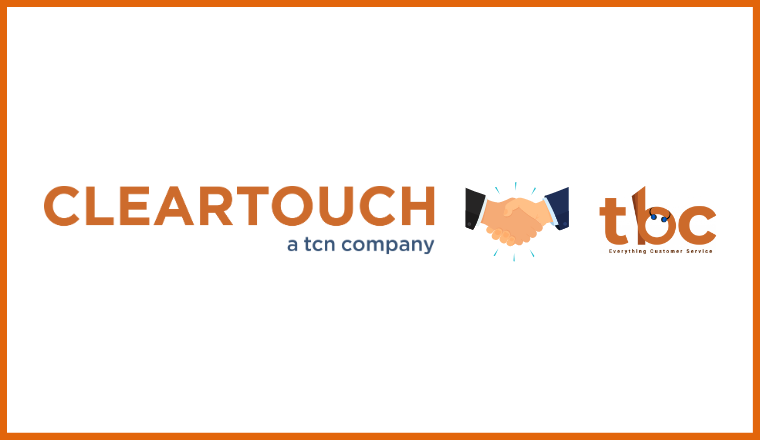Press Release – The Bharat Connect Marks Its First Anniversary, Quickly Expanding as India’s Only Community Group That Serves the Customer Service Industry
Co-founded by ClearTouch, the organization experienced substantial growth in its first year to more than 600 members, offering numerous industry articles and webinars
CHENNAI, India — (BUSINESS WIRE) — ClearTouch, a pioneering provider of a cloud-based call center platform for enterprises, contact centers, BPOs and financial services companies in India, today celebrates the first year of The Bharat Connect (TBC), India’s only industry community group for call centers, contact centers, BPOs and KPOs. As a founding member and platinum sponsor, ClearTouch, a subsidiary of TCN, Inc., a global contact center technology provider, has helped grow TBC’s membership to more than 600 professionals in its first year.
“We are excited about the value and energy TBC has brought to hundreds of call centers, customer service and customer experience professionals in India,” said Uthaman Bakthikrishnan, executive director of ClearTouch. “We are confident that TBC will continue to make a positive impact on India’s call center industry and look forward to serving this unique community by staying at the forefront of ever-changing industry innovations and trends.”
“We are confident that TBC will continue to make a positive impact on India’s call center industry and look forward to serving this unique community by staying at the forefront of ever-changing industry innovations and trends.” – ClearTouch
TBC was created during the COVID-19 pandemic in response to the increased communication needs of consumers and the high demand for Indian professionals working in the customer service industry. Its aim is to be the voice of the Unified Communication as a Service (UCaaS) industry, engaging with call centers, customer service departments and customer experience representatives of corporations and outsourcers in India. A creative portal for the customer service community, TBC offers an extensive library of contributed blog posts and hosts online events to help its members network and learn from industry leaders and colleagues.
In the coming months, TBC plans to launch several initiatives for the UCaaS industry, including virtual and in-person events, research reports on latest industry trends and a series of training workshops.
TBC’s membership is free and open to all customer service industry professionals in India. For more information, visit www.thebharatconnect.com.
About The Bharat Connect (TBC)
Established in 2020, The Bharat Connection (TBC) is India’s only industry community group for professionals working at call centers, contact centers, BPOs and KPOs. With more than 600 members, TBC serves as a creative portal that offers an extensive library of blog posts about industry news and trends and regularly hosts online events and webinars. For more information, visit www.thebharatconnect.com or follow on LinkedIn: https://www.linkedin.com/company/the-bharat-connect/.
About ClearTouch
ClearTouch is a pioneering provider of a cloud-based call center platform for enterprises, contact centers, BPOs and financial services companies in India. A subsidiary of TCN, Inc., a global contact center technology provider, ClearTouch introduced the first cloud-based contact center platform in India in 2016. ClearTouch combines a deep understanding of the needs of call centers with a unique approach to pricing – no contracts, monthly minimums or maintenance fees – that supports rapid scaling and instant flexibility to changing business needs. ClearTouch’s contact center platform features a holistic set of easy-to-use, automated agent tools and advanced apps for omnichannel communications, workforce engagement, compliance & data management, integration & automation, intelligence, reporting & analytics and collaboration & accessibility. Its suite of compliance tools helps businesses meet the requirements of telemarketing and telecommunications regulations both in India and North America. Trusted by companies of all sizes in the healthcare, insurance, financial services, banking and BPO industries, among others, ClearTouch is headquartered in Chennai and maintains offices in Bengaluru, Hyderabad, Delhi and Mumbai. For more information, visit www.cleartouch.in.
Source: Business Wire Release.











